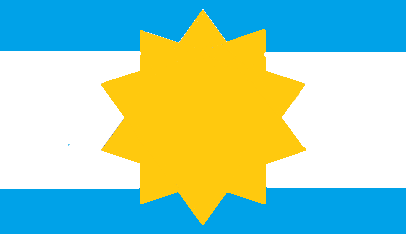Simendosa
Principality of Simendosa Rabkhantho do Simendosa | |
|---|---|
|
Flag | |
| Motto: "A True Haven for Our People" | |
| Anthem: "Our Prince, Decended from Yama" | |
| Capital | Simendosa |
| Official languages | Dorian |
| Ethnic groups (2020) |
|
| Demonym(s) | Simendosan |
| Government | De Jure: Parliamentary constitutional monarchy De facto: Semi-absolutist monarchy |
| Andosh III | |
• Prime Minister of Simendosa | Galisqa Seedran |
| Legislature | Simendosan Royal Parliament |
| Establishment | |
• Island Settled | 15th, July 1471 |
| Area | |
• Total | 1,456.6 km2 (562.4 sq mi) |
| Population | |
• 2020 estimate | 9,172,800 |
| Currency | Royal Simendosan Khestur (R$K) |
| Time zone | Furukuran Sea Standard Time |
| Driving side | right |
| Calling code | +807 |
| Internet TLD | .ps |
The Principality of Simendosa is an island city-state centered in the middle of the Strait of Simendo in the Southern Furukuran Sea. Simendosa shares sea borders with the Sultanate of Potomiak to its north and Kisar to its South. The city itself is built upon a series of smaller islands making up the Simendosa archipelago. The originally uninhabited islands were settled in the late 15th Century by Dorian religious and ethnic refugees fleeing Seitran imperial dominance in their home of Guadalupador. The first group of settlers arrived in 1471 under the leadership of a minor noble, Lord Donrus Simendo of which the settlement gained its name from and from where its ruling family is descended from. The Principality is one of the premier financial hubs in the southernmost half of the Furukuran Sea, rivaling Kesslerstaadt.
Etymology
The name Simendosa derives from the chief financier of the first "Freedom Migration" and founder of the Principality, Lord Donrus Simendo (1446-1514.) Simendo then became the first Prince of Simendosa shortly after landing on the island.
History
Mass Migration Period
In 1454 the Seitran Empire shifted its sphere of influence northward into the declining Kingdom of Olahn. The Christian Seitrans moved swiftly to capitalize on the period of disarray that the feuding lords of Olahn had provided them. Within twenty years of their shift of influence Seitra won over rebellious Dorian vassals and enforced a personal union with the Olahn Kingdom officially incorporating the Dorian provinces into the Seitran Empire. In 1470, a series of expeditions by a series of former nobles and merchants started ahead of the implementation of strict religious and cultural laws to be enforced by Seitran authorites on the Dorians. A petty noble, Lord Donrus Simendo of Lower Khatala financed an expedition to allow Dorians to escape impending official religious and cultural persecution. Simendo sold his land and titles in Guadalupador to purchase several ships and vast amounts of supplies for an incredibly long journey. In January 1470 Simendo and his first cadre set sail from Enrico westward across the ocean initially landing on the continent of Musgorocia, in present-day Cispania. Simendo and his settlers faced resistance from the native peoples present and continued along the coastline attempting to settle in several other places before continuing on away from the continent ever westward. On the 15th of July, 1471 Simendo and his settlers finally landed on the uninhabited island known onward as Simendosa, situated within the strait of Simendo and near present-day Potomiak. After 14 months of establishing a colony, Lord Simendo returned to Guadalupador to gather more settlers, growing the colony to over 6,400 by his death in 1514. Prince Donrus' son, Andosh I succeeded him as the leader of Simendosa, starting the Simendosan Dynasty of rulers.
Rivalry with Kesslerstaadt
The burgeoning Principality of Simendosa at the turn of the seventeenth century had expanded its influence through acting as a free port of call in the Southern Furukuran Sea. The Principality had become a haven for privateers, pirates, mercenaries, smugglers, and legitimate traders of all walks of life within the Old Port district, "a prosperous and seedy port rivaled by none" as it was described by a Simendosan official, until a group of Baelish Cultists arrived across the Strait of Simendo in 1635. Initial relations between Simendosa and the cultists were relatively positive before taking a turn into hostile following the killing and sacrifice of several Simendosan sailors arrested by the cultists in 1642. The Prince officially endorsed privateers to raid the cultist's island in response to the sacrifice incident, with minor armed confrontations in the Strait of Simendo erupting throughout the 1650's.
